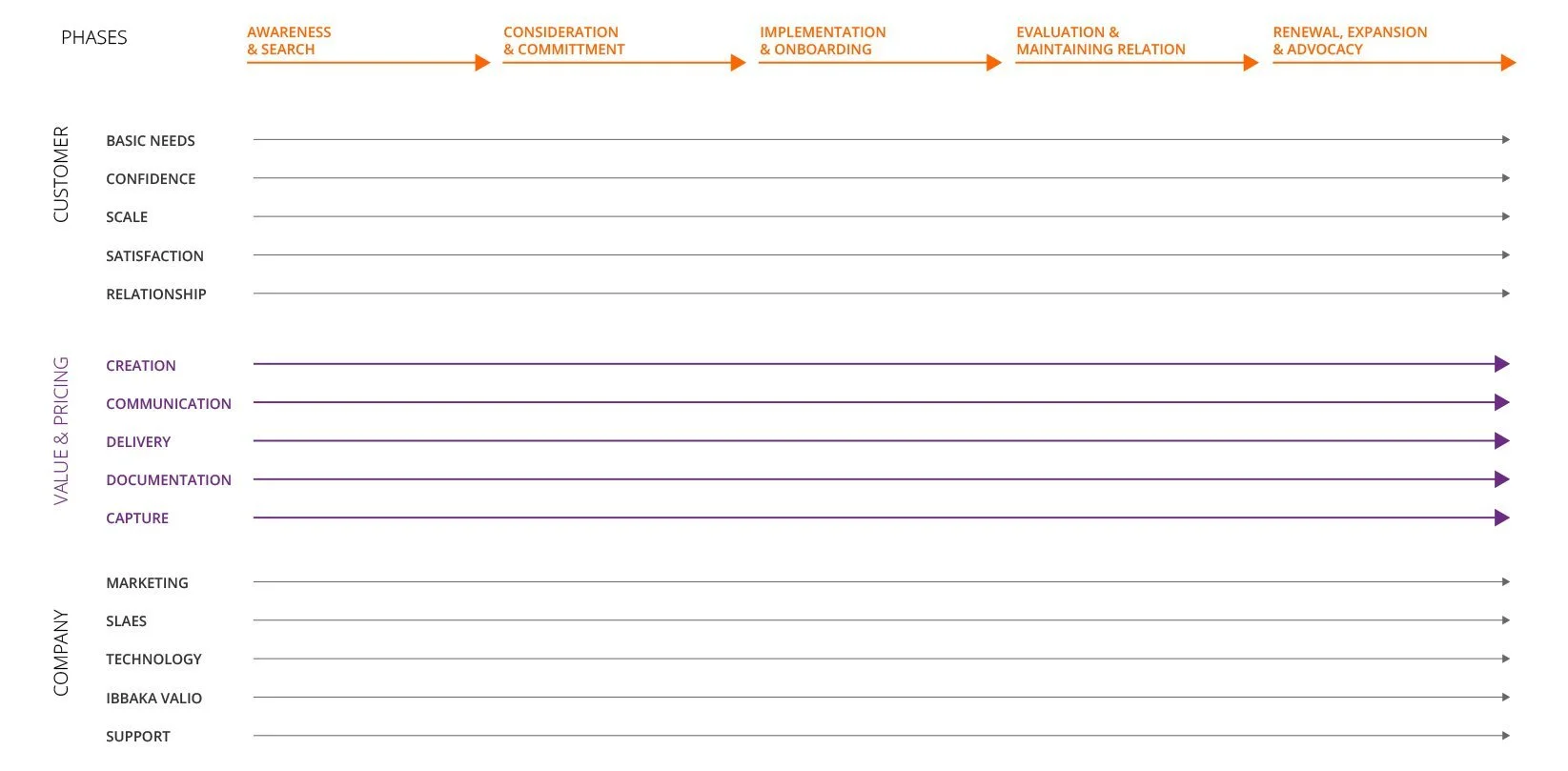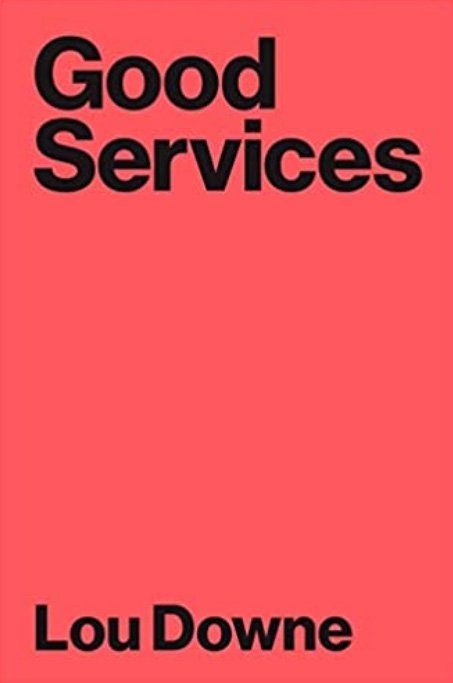“Don’t just design the steps of your service, design the space between them.” ~ Lou Downe
By Gregory Ronczewski, Director of Product Design at Ibbaka. See his skill profile.
For the last few days, I have been looking at Customer Journey Maps that we've done for several of our clients. It is part of the Solutions that Ibbaka offers, and most Journeys follow the five main phases:
Awareness & Search
Consideration & Commitment
Implementation & Onboarding
Evaluation & Maintaining Relationship and Renewal
Expansion and Advocacy
The details change with each client as the data informing our work doesn't always follow the same script. There are different types of Journey Maps, but for our purposes, we often approach mapping the existing path that a customer takes or, depending on a project, a future course that a company is planning. Still, most of the journeys are informed by the stakeholder's interviews, polls, surveys, and the old-fashioned way of simply talking to the customers.
This time, however, the work I started was different. We wanted to apply the same methodology to uncover how it feels to be an Ibbaka client. And because our focus is on the Ibbaka Valio platform - the end-to-end Pricing and Customer Value Management solution expressly set for B2B SaaS companies, the set of insights that we want to uncover will guide both the development and marketing initiatives. And to make it even more interesting, we want to look at the total user experience through a value and pricing lens.
In the past, I helped to craft a customer journey which, once printed, was 3 meters long. I vividly remember hanging it in the client's boardroom before our presentation. Now, with everything (almost) delivered remotely, we moved towards Google Slides, which is fine but lacks a high-level view. Of course, we always have an introductory slide listing all the phases, but seeing it all laid out helps me, so I set myself for a challenge to not only develop a semi-custom template that we will use in the future but also find a way of seeing it all in one view. I am excited about possibilities that may arise from the new way of looking at the Customer Journey that, if done well, should improve relationships with Ibbaka's existing and new customers.
Please, don't get excited. The map is not ready, but I promise I will write a follow-up post introducing at least some of the visuals, but for now, all I have is the theory - a set of ideas and thoughts that have occupied my mind for the last few days and this elementary sketch.
I want the top of the map to focus on the customer and, to be precise, on the several areas that motivate the customer to seek our services. Basically, it will be the "why?" area. Asking why forms the foundation of any design project. In Service Design, there is a technique where why is asked several times to get to the bottom of a problem. It is fundamental for us to ask, "Why do you need a pricing expert or a pricing platform?" Without the answer, we can't truly set the project in a more than satisfactory way from the client's perspective. The lower section of the customer map could focus on the basics, the relief from a problem we will address, and the support we offer. At the same time, the middle provides an opportunity to talk about trust (there is no project without trust) and our solution's scale and sustainability. In the upper section, I intend to capture the overall experience - the value that the client gains from working with us. Of course, it will be a bit more complicated for B2B clients, but the overall direction seems ok, at least in a sketch format.
I want to dedicate the bottom of the map to Ibbaka, which may serve as a proxy for our B2B SaaS client. Regardless of us being the service of our client delivering it, there are a few swim lanes (a good map needs swim lanes, although the big one, the 3m x 1m, did not have a single lane) that should address the fundamentals: marketing, sales, technology, the actual platform and the support. These are the areas furnished with various touch points (the cute little icons that make every Customer Journey so unique).
With the Client section at the top and the Company at the bottom, there is one missing ingredient - the value and pricing lens - the connective tissue, which hopefully will inform some of the insights we hope to uncover. On top of that, I mistakenly suggested that insights could be divided into "current" and "future." Why mistakenly? Because now, I need to do it, and I have no idea if this will work. On the bright side, a designer's life without a challenge is not fun. It is boring, and I am both grateful and optimistic because, with the explicit goal, I am sure things will align accordingly. They always do.
Now, here is the thing. Most of my writing falls into Ibbaka Skill and Talent Management Blog, but in this post, the focus moved toward the Ibbaka Valio platform. However, the approach - the value we will be closely monitoring- applies to Ibbaka Talio, Skill Management platform. The care and attention that is part of company values make it universal. So, enough writing - let's make the Customer Journey Map.




